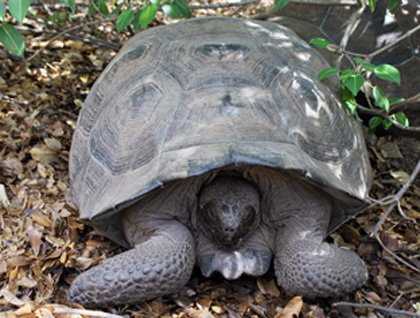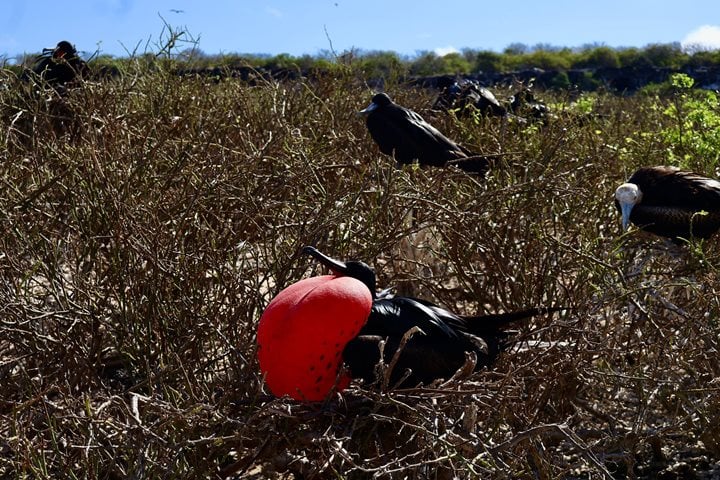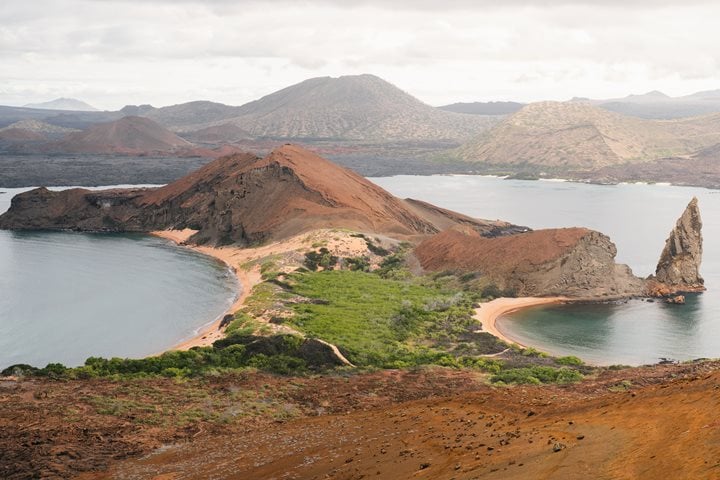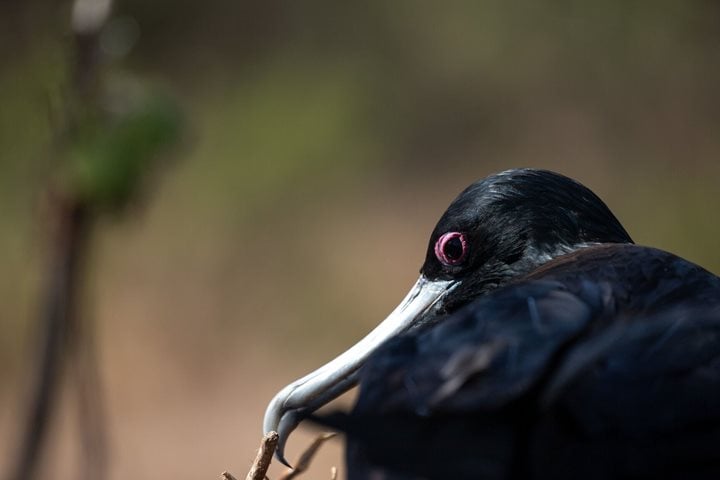Today was our second day on the western side of the Galapagos, exploring the largest island, Isabela. We anchored this morning at the foothills of one of the six shield volcanoes, Alcedo, where the largest populations of giant tortoises are found.
While we headed to the landing beach at Urbina Bay, named after one of the early Ecuadorian presidents, we spotted a group of golden rays, gliding gracefully on the surface of the water, and then just before we landed, a few Galapagos penguins and blue footed boobies were spotted fishing near the shore. What a surprise!
The beach was completely covered with nests of Pacific green sea turtles, which are laying their eggs at this time of the year. During our hike, we could see the evidence of the uplifting event that took place in 1954, when the ocean floor was lifted several kilometers off the coastline of this visitor site. As we walked further into the island, we spotted our first giant tortoises in the wild, all belonging to the population of Alcedo Volcano. This population of tortoises is dome type, with some adult and young individuals. We also encountered some land iguanas, the yellowish ones, which are one of the three species of land iguanas found in the Galapagos Islands.
Several years ago, Isabela Island was the focus of a significant and successful program in the ecological restoration of the islands, called the Isabela Project, for the eradication of feral goats and donkeys. Never before has a program of such magnitude been attempted on an island this size, but the program was supported by Lindblad Expeditions-National Geographic Society through guest donations, and was successful beyond all expectation. Now the endemic species that once faced extinction, mostly iguanas and tortoises, are increasing in numbers and sustaining their fragile ecosystem.
After a very hot and humid hike, we return to the landing beach to enjoy the refreshing water and the company of many penguins that delighted our guests by swimming and fishing, ignoring their presence in the water. Minutes ago, a male sea lion was hunting a couple of young black tips sharks that he partially ate, and we were lucky enough to find the body of one of these sharks in the water, so we took it out and inspected carefully with our guest. It was a fascinating experience!
In the afternoon, our ship repositioned a few miles north to visit Tagus Cove, a famous site visited by Charles Darwin during his visit to the islands in 1835. Today, some interesting historical graffiti can be found here, from the time when wayfarers have sought and found a sheltered harbor here.
Some of us decided to go snorkeling, kayaking and zodiac riding, while others took the opportunity to explore and hike along the tuff cones to see the famous Darwin Lake and the view of Playa Tortuga Negra, located north of Tagus Cove, where a team of scientists of the Charles Darwin Research Station have been camping with the sole purpose of collecting the eggs of one of the rarest finch in the world, the Mangrove Finch. There are no more than 80 individuals of this species left in the wild, as they are now threatened by the presence of a parasitic fly that lays its eggs on the nests of these finches. The larvae of this fly will eat the chicks alive, so there is no chance for them to have successful reproductive cycles, and therefore the Galapagos National Park decided to implement an urgent conservation project to save the Mangrove Finch. Today, the team rescued 10 eggs that we are carefully transporting on board to the facilities of the Darwin Station in Santa Cruz Island, where they will be properly incubated. Once hatched, the babies will be hand reared for about 25 days and then reintroduce back to their wild habitat with micro radio transmitters to follow them until they completely adapt to their natural habitat.
Our guests were part of this successful history, with Lindblad-National Geographic teaming up with the National Park and the Charles Darwin Station to collaborate and participate in saving endangered species and restoring ecosystems. It is the most wonderful way to travel, leaving a positive impact on the places that we visit.







